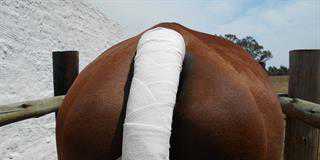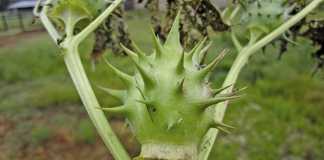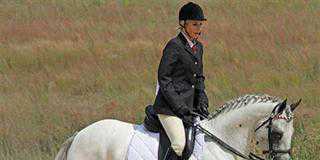A splint is a bony growth that forms on the inside edge of the splint bone between the splint bone and the cannon bone. It is the result of tearing of the ligaments between the bone, which causes inflammation and eventually a small bony growth.
These growths can vary from pea-size to that of a table-tennis ball. The splint will cause lameness and heat while in the formative stages. Once the splint has formed and hardened it will not affect the horse, unless it is near the action of the knee joint.
Young horses that are asked to do too much work on immature legs are prone to splints. Conformation problems can predispose a horse to splints. Unbalanced feet and hard going all are possible causes.
Remedies
Calc Flour 30c (concentration) –this is a tissue salt. Give 10 pills six times a day on the bottom lip. Then once a day for a month, and followed by every other day for a month.
Symphytum at 30c, once a day while there is lameness and or sensitivity to touch. Ruta Graveolens 30c or 6c, this should be given every 15 minutes for three hours, then once a day to support the periostum, tendons and ligaments. Use this remedy long term.
A herbal anti-inflammatory herb such as devil’s claw may help in the initial stages. Feed 30g every day for a month.
MSM , 30g once a day.
Beware of strong chemicals claimed to remove splints. Your horse could end up with no splint, but white hair or even no hair. With a troublesome splint, your vet may recommend laser treatment.
When you notice the splint, the first thing to do is cold-hose the area for 20 minutes then prepare a cabbage leaf poultice. Take four cabbage leaves, boil for 10 minutes and let cool. thick cotton wool, place the cabbage on the leg and bandage carefully. It is advisable to bandage all four legs. Bandage for eight hours. remove and cold-hose the leg again. Repeat for five days
Point out the splint to your farrier and ask him or her to minimise the impact that the foot makes with the ground. Keep your horse still and off hard ground until the lameness and heat have totally gone. hen you bring your horse back into work, make sure it is done very gradually!– Kim Dyson Contact Kim Dyson on 082 888 6511. |fw













